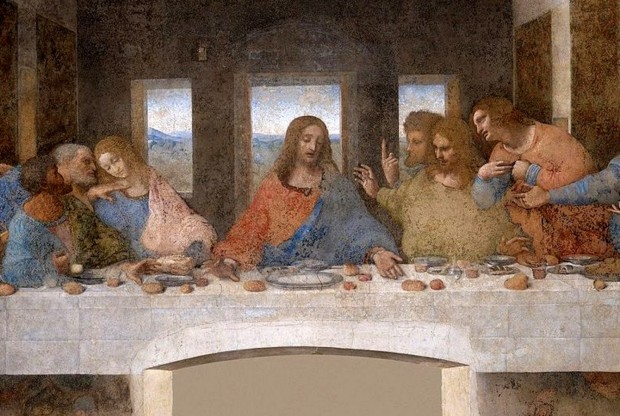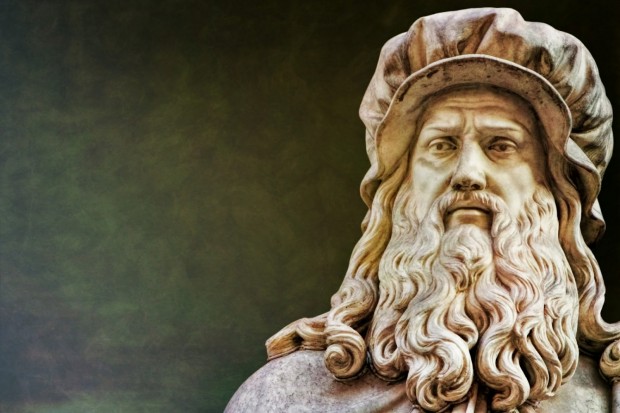
(Photo: Visiting the Last Supper - An Experience to Remember)
Visiting the Last Supper, one of the most famous artworks in the world, is a once-in-a-lifetime experience for art enthusiasts and history buffs alike. Painted by Leonardo da Vinci, this masterpiece is known for its complex composition, emotional depth, and intricate details. This article will provide you with everything you need to know to make your visit to the Last Supper unforgettable, including practical information, what to expect, and other attractions nearby.
The Last Supper: A Brief History
Leonardo da Vinci painted the Last Supper between 1495 and 1498 on the wall of the refectory in the Dominican convent of Santa Maria delle Grazie in Milan, Italy. Commissioned by Ludovico Sforza, the Duke of Milan, this mural depicts the dramatic moment when Jesus Christ announces that one of his apostles will betray him, as described in the Gospel of John.
The Last Supper is a prime example of High Renaissance art, showcasing Leonardo's mastery of perspective, composition, and his ability to capture human emotions. It has inspired countless artists and has been the subject of numerous reproductions and reinterpretations, cementing its place in the annals of art history.

Visiting the Last Supper: Practical Information
The Last Supper is housed in the refectory of the convent of Santa Maria delle Grazie, located at Piazza Santa Maria delle Grazie 2, Milan, Italy. Due to the fragile nature of the painting and the need to limit visitor numbers for conservation purposes, reservations are required to visit the Last Supper. It is advisable to book your tickets well in advance, as they sell out quickly.
To make the most of your visit, consider joining a guided Last Supper tour, which will provide you with in-depth information about the painting, its history, and the stories behind its creation. Many tours also include visits to other nearby attractions, making it a convenient way to explore Milan's rich artistic heritage. The actual viewing time for the painting is limited to 15 minutes, but you should allow for additional time spent in security checks and waiting in the queue. A complete visit, including exploring the surrounding area and nearby attractions, can take anywhere from 2 to 4 hours.
As the Last Supper is located within a religious site, it is important to dress modestly out of respect for the venue. Shoulders and knees should be covered, and avoid wearing hats or caps inside the refectory.
Photography is allowed inside the refectory, but the use of flash is strictly prohibited to protect the painting from light damage. Make sure to switch off your flash and take the opportunity to capture some memorable shots of this iconic masterpiece.

What to Expect During Your Visit
Upon arrival, visitors must pass through a series of airlocks and climate-controlled chambers designed to protect the fragile painting from humidity and temperature fluctuations. Bags, backpacks, and large items are not allowed inside the refectory and must be stored in the cloakroom.
Visitors are allowed to spend a maximum of 15 minutes in the presence of the Last Supper. This allows for a limited number of people in the room at any given time, ensuring the painting's preservation and providing an intimate viewing experience. During your visit, you can admire the masterpiece from a safe distance and observe its numerous details and nuances.
Key Elements of the Painting to Look For
- Composition and perspective: Leonardo da Vinci employed linear perspective and a single vanishing point to create a sense of depth and realism. Notice how the architectural elements and the arrangement of the figures draw the viewer's eye towards the central figure of Christ.
- Depiction of emotions: One of the most striking aspects of the Last Supper is the way Leonardo captures the emotional reactions of the apostles to Jesus' announcement. Look closely at each apostle's expression and body language, revealing a range of emotions such as shock, disbelief, and sadness.
- Hidden details: The Last Supper is full of subtle details that may not be immediately apparent. For example, observe the spilled saltcellar in front of Judas, symbolizing bad luck or betrayal, and the hand holding a knife, hinting at the impending violence.
The Last Supper's Restoration
The Last Supper has undergone several restorations throughout its history due to the painting's fragile state. Leonardo used an experimental technique, applying oil and tempera on a dry wall instead of using traditional fresco methods, which led to the painting's deterioration over time. Environmental factors, such as humidity and pollution, have also contributed to the artwork's vulnerability.
The most recent and extensive restoration, completed in 1999, aimed to remove layers of grime, overpainting, and previous restoration attempts, revealing the original colors and details. While the restoration has been met with both praise and criticism, it has undoubtedly provided a clearer understanding of Leonardo's original vision and his unparalleled artistic genius.
Other Attractions Nearby
Santa Maria delle Grazie: The church of Santa Maria delle Grazie, adjacent to the refectory housing the Last Supper, is a UNESCO World Heritage site and a fine example of Renaissance architecture. It features a stunning apse designed by the renowned architect Donato Bramante.
Leonardo da Vinci National Museum of Science and Technology: Just a short walk from the Last Supper, this museum houses an impressive collection of exhibits and models inspired by Leonardo's scientific and technological innovations. It is a must-visit for those interested in understanding the breadth of his genius beyond his artistic achievements.
Sforza Castle: This historic fortress, once the residence of the ruling Sforza family, is now a museum complex featuring art collections, including works by Michelangelo and several pieces by Leonardo himself.
A visit to the Last Supper is an unforgettable experience that allows you to witness firsthand the genius of Leonardo da Vinci and the enduring power of his art. By following the practical tips and information provided in this article, you can make the most of your visit and gain a deeper appreciation for this remarkable masterpiece.
This article is copyrighted by Travelers Today, the travel news leader
* This is a contributed article and this content does not necessarily represent the views of travelerstoday.com



